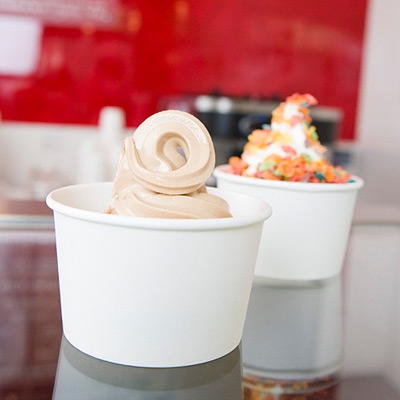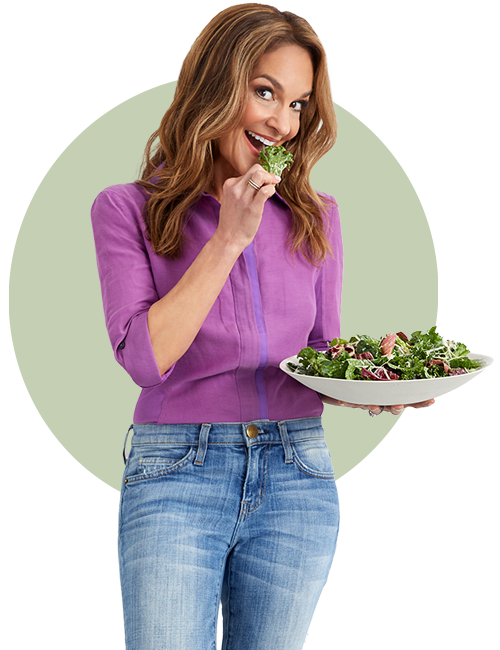Healthy Foods That Pack on the Pounds
There are some foods that we automatically consider healthy, but what most people don’t know is that these seemingly healthy choices can cause you to gain weight if you consume too much of them or the wrong varieties. Here are eight foods that could be sneakily sabotaging your diet — plus tips for how to incorporate them into your diet without sacrificing your waistline.
Plus, learn clever weight-loss tips from real-life success stories in my latest book The Joy Fit Club; Cookbook, Diet Plan & Inspiration!

Trail Mix
Trail Mix
Most people see trail mix as a sensible snack, but depending on its ingredients, it can be very calorie dense. I’m talking about dried fruit, nuts, chocolate chips, yogurt-coated fruit, or fried banana chips—all of those can cause the calorie and sugar content of your snack to skyrocket! Plus, it’s so easy to gobble down large amounts of trail mix—and even just two handfuls can add up to over 400 calories.
Instead of eating store-bought versions, make your own “slim-style” trail mix by using air-popped popcorn and whole-grain cereal to puff up the volume and dilute the healthy-but-caloric mix-ins like nuts and dried fruit. You’ll get a much larger, more substantial portion (two to three cups) for just 180 cals. That’s four times as much for less than half the calories!

Whole Wheat Pasta
Whole-Wheat Pasta
Whole-grain pasta is definitely better for you than regular white noodles (which are made from refined flour stripped of fiber, vitamins, and minerals), but it’s still a calorie-dense starch that’s easy to go overboard with. A typical pasta serving at a restaurant or from home is two to three cups, creating a dish that adds up to about 825 calories—even when topped with low-cal marinara sauce!
Instead, try adding vegetables to pasta at home or ordering your pasta with veggies, which automatically adds volume (plus nutrition and fiber) and drives down the carbs and calories. If you make or order your pasta with about half vegetables, that same three-cup serving of pasta plummets from 825 calories to 570 calories. That’s a substantial savings for your waistline!

Olive Oil
Olive Oil
Vegetable oils—like olive and canola—may be heart-healthy, but they’re still high in calories, which can add up to big-time weight gain if you use them liberally when cooking at home. Every tablespoon of oil adds another 120 cals, and you can easily pour two to three tablespoons in the pan when you’re cooking.
To dramatically cut back on the amount of oil in your dish, use a reusable oil mister (or cooking spray) instead of oil straight from the bottle when you roast, grill, and pan sauté. You can potentially save thousands of calories per week!

Fruit Juice and Nectars
Fruit Juice and Nectars
“Real fruit” drinks like 100% fruit juice and fruit nectars have an aura of health, and while they do provide some vitamins and minerals, they’re still loaded with sugar (just like soda and lemonade). That also means they’re sporting plenty of calories. Not to mention, liquids don’t fill you up like solid foods do. A typical 16-ounce glass of orange juice clocks in at 220 calories. For that same calorie load, you can eat a whole orange, plus a cup and a half of strawberries, and half a cantaloupe!
Swap your daily fruit-juice fix for a can of naturally fruit-flavored, zero-calorie seltzer, which doesn’t contain any sugar or artificial sweeteners—so it’s not sweet—but thanks to the carbonation, has a nice fizzy pop (just like soda) that excites your taste buds.

Frozen Yogurt
Frozen Yogurt
Ever get frozen yogurt, thinking you’re being oh-so-virtuous by picking the lighter, healthier dessert? Well check this out: At one of those trendy yogurt shops that are everywhere these days, a medium frozen yogurt with two toppings (let’s say chocolate chips and granola) packs in around 400 calories—that’s the equivalent of eating eight chocolate-chip cookies or an indulgent slice of apple pie!
You can still get your fro-yo fix without derailing your diet by ordering the small (only about 100 cals). As for those extras, stick to only one delicious topping of your choice. The healthiest picks are fresh fruit, nuts, or dark chocolate chips. A small yogurt topped with fresh fruit generally weighs in under 150 cals—light on calories but heavy on taste!

Guacamole
Guacamole
Avocados, the main ingredient in guacamole, are chock-full of heart-healthy monounsaturated fats, but they’re also calorie dense. And most of us don’t go light with the dip (a half cup is around 200 calories). Plus, if you’re using it to dunk fried chips, you’re really packing in the calories!
Lighten up your guacamole by mixing in some nonfat Greek yogurt; it gives the dip a nice tang and brings down the calorie count. Then, swap the fattening chips for crudités like celery, broccoli, and bell-pepper strips, and use those as dippers. If you’re craving the avocado, but not the guilt, try adding a small amount of diced avocado to salsa, one of my favorite slimming condiments, for a much lower calorie treat!

Salads
Salads
While a fresh green salad seems to be the ultimate healthy dish, yours can easily take a turn for the unhealthy if you load on lots of high-calorie ingredients, like croutons, cheese, avocado, bacon, crispy noodles, nuts, and seeds. Not to mention the dressing—a typical pour (self-serve or at a restaurant) is four tablespoons, which can add another 360 calories to your bowl!
To keep your salad healthy, make it mostly veggies and use a wide variety of colors, too (you’ll also get the most health benefits!). Red bell peppers, broccoli, carrots, sugar snap peas, cucumbers, and red onions are all great choices. Add only one or two of the high-cal ingredients, going light on the amounts, and just two tablespoons of dressing, choosing light versions whenever possible. (My homemade vinaigrette is just 55 calories for two tablespoons!)

Organic Snack Foods or Desserts
Organic Snack Foods or Desserts
The word “organic” is the new “fat-free.” When it appears on labels, it gives products a halo of health. But muffins made with organic butter and organic sugar are still loaded with calories!
The same goes for organic ice cream, organic potato chips and organic cookies. A study done by a graduate student at Cornell University found that subjects reported preferring almost all the taste characteristics of the organically labeled foods, even though they were nutritionally identical to their conventionally labeled counterparts. The foods labeled organic were also perceived to be significantly lower in calories, lower in fat and higher in fiber, and more nutritious than their non-organic counterparts. The takeaway? You still have to do your homework and read the nutrition label to determine if a product is actually healthier! Don’t just assume it’s healthy because it’s organic.

Intro
There are some foods that we automatically consider healthy, but what most people don’t know is that these seemingly healthy choices can cause you to gain weight if you consume too much of them or the wrong varieties. Here are eight foods that could be sneakily sabotaging your diet—plus tips for how to incorporate them into your diet without sacrificing your waistline.
Plus, learn clever weight-loss tips from real-life success stories in my book The Joy Fit Club; Cookbook, Diet Plan & Inspiration!

